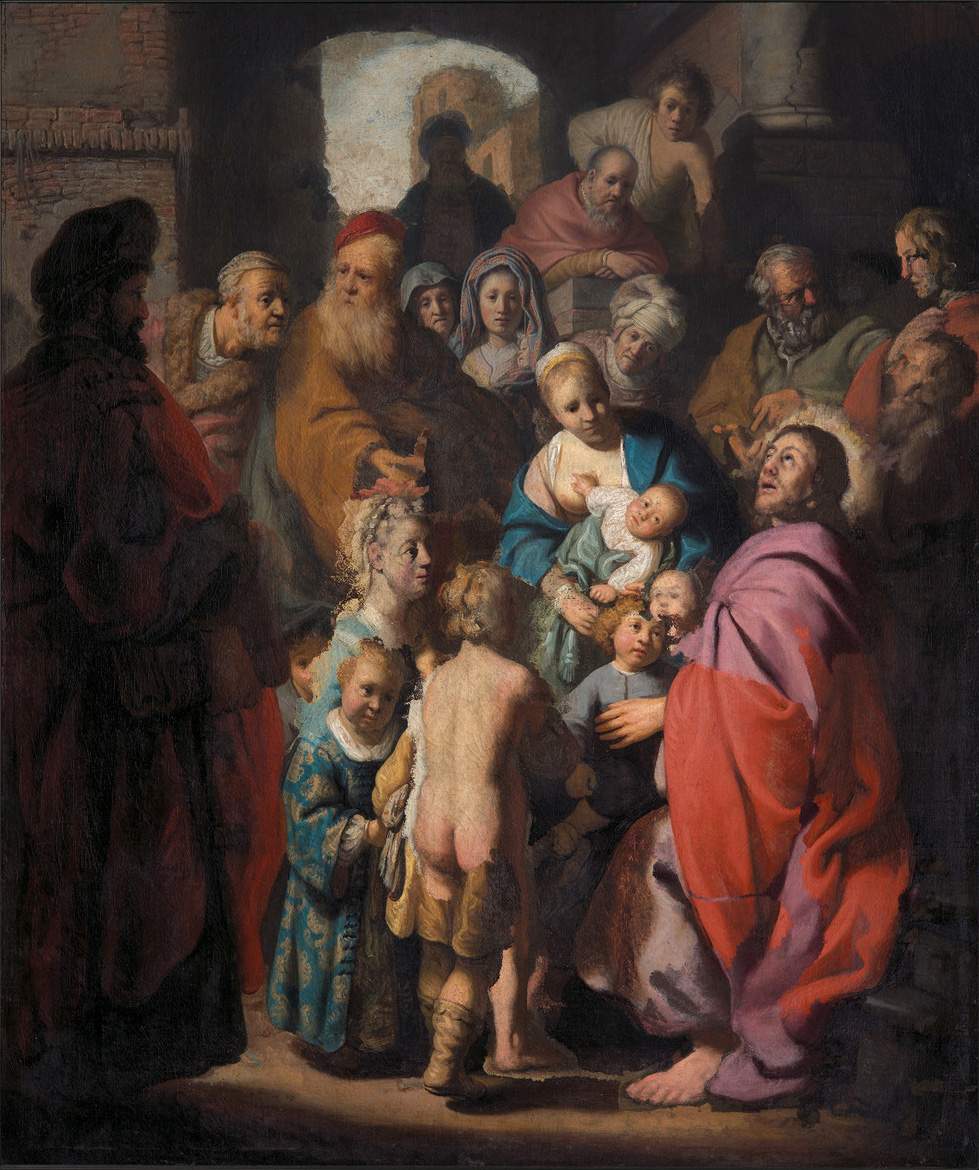The Sinite parvulos venire ad me that is allegedly to be attributed to the inspiration of Rembrandt van Rijn (Leiden, 1606 - Amsterdam, 1669) will go on display: this is the first time that the work, a recent discovery, has been exhibited to the public. Going up for auction in 2014 with a generic attribution to a painter of the Dutch school, the canvas was bought for 1.5 million euros by a dealer who was also Dutch, Jan Six, who was already convinced that it was a work by Rembrandt because, according to Six, the painter included his own self-portrait in it, in the figure of the man on the top of the composition looking down in amazement.
The attribution to Rembrandt is shared by other scholars (starting with Christopher Brown, director of the Ashmolean Museum in Oxford and one of the world’s leading experts on the artist), and a date between 1627 and 1628 has been proposed for the work, based on stylistic comparisons with other contemporary works. The painting, which depicts the famous Gospel episode in which Christ uttered the phrasing “let the children come to me” at the moment when the apostles were trying to repel the throng of little ones who wanted to touch the Messiah, is awaited by a two-stage tour, those that make up the Young Rembrandt exhibition, as part of which the painter’s early paintings, made between 1624 and 1634, will be on display. From November 2, 2019 to February 9, 2020, the exhibition will be held in Rembrandt’s hometown of Leiden at Museum De Lakenhal, then from February 27 to June 7 it will fly to Oxford where it will stop at theAshmolean Museum.
Pictured: Rembrandt (attributed), Sinite parvulos venire ad me (c. 1627-1628; oil on canvas; Private collection)
 |
| On display for the first time is the painting recently attributed to Rembrandt |
Warning: the translation into English of the original Italian article was created using automatic tools. We undertake to review all articles, but we do not guarantee the total absence of inaccuracies in the translation due to the program. You can find the original by clicking on the ITA button. If you find any mistake,please contact us.